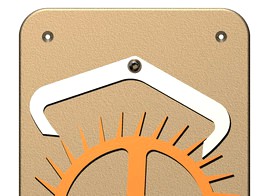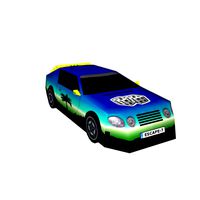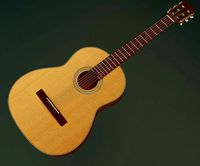GrabCAD

Classic Escapement - Graham (Ideal)
by GrabCAD
Last crawled date: 1 year, 10 months ago
Based on the book CLOCK AND WATCH ESCAPEMENT MECHANICS by Mark V. Headrick (Copyright 1997) as a fine source, I try to present rigorously the essence of escapement design. The book is public (http://www.nawcc-index.net/Articles/Headrick-EscMechanics.pdf), so you can read and compare (with the book) everything I present here. My intention is to create a series of projects dedicated to this subject - as you will see - but only concerning the geometrical aspects. Actually, you can use my projects as accurate simulations for understanding the book. I recommend you to download the book in order to use it when your computer is offline.
All parts, assemblies, and simulations/animations are made with Inventor 2014, so some specific references are bonded to this software.
As you can learn from the book, there are three classical kinds of escapement mechanisms: Graham (dead-beat), Recoil, and the Swiss Lever.
The term „dead-beat” is explained in the book on page 21. Actually, due to their circular shape, the palette arms slid along the wheel teeth, so the wheel is stationary during the lock time. More details can be found here: https://youtu.be/D9UT6YwzmBU. By contrast, the recoil escapements permit a certain backward rotation of the wheel, so the reel is practically „recoiled” during the lock time. This effect could be noticed in my previous project https://grabcad.com/library/escapement-macdowall-305-1. A great recoil can be noticed also in my former (original) project https://grabcad.com/library/escapement-non-slip-pawls-solution-1.
We start here with the Graham (dead-beat) escapement. The first step is to create the geometry of two parts: the wheel and the palette, as the main interconnected parts of the mechanism. The geometry has a first version - the Ideal mechanism. The Ideal version is very tight, with no clearance, and its purpose is to establish the geometry of the two parts. After considering this version, we shall slightly modify the palette in order to make the mechanism functional. This is why I present two different projects: the Ideal Graham escapement (this one), and Modified Graham escapement (the next one).
This first project is explained in the book till page 11: „5: The Importance of the Simulation”.
Firstly you have to look at the picture showing the Inventor sketch „Wheel - Palette.jpg”. The picture explains how the geometrical construction is made. The facet of the wheel tooth is 0.5 degrees (not mm). You have to consider the diamond-square which has the four driven dimensions noted (90.00). It connects the palette with the wheel. The reason for a pair of these dimensions is explained in the book on page 10. The other pair is naturally correct since they are radius and tangent to the same circle.
Watching the Video you see immediately the movement of the palette, due to the pendulum which is joined to it. It is difficult to see that the wheel is also forced to rotate clockwise. If you look carefully a bit, you understand that, when the palette is rotating also clockwise (the second swing), nothing but an imposed motion applied to the wheel makes it rotate. When the mechanism is presented from the back you understand that a thread and a weight must be spooled on the reel to produce the motion. They are not present because threads/ropes are not allowed in Dynamic Simulation in Inventor. Instead, a torque (of 20 N·mm) is applied to the reel.
Anyway, the escapement does not work properly. Actually, the wheel is blocked between two teeth by the palette because there is no clearance to permit the wheel to move on. The palette (and the pendulum) are slowing their movement, and finally, they will completely stop. The problem will be solved in my next project (see https://grabcad.com/library/classic-escapement-graham-modified-1).
Included is the file „Output Grapher (5s).jpg” where you can see the slowing movement of both mobile parts. Enter the Environment / Dynamic Simulation and run once the simulation, then click on the Output Grapher tool to see this for yourself.
Look to the next project (Classic Escapement - Graham (Modified)) to see the correct movement of the parts.
Note
You will notice the small eccentric hole (Ø2 mm) on the wheel. This was placed there in order to get attention from the Dynamic Simulation module to automatically create a revolution joint for the wheel. Without this hole, the automatic creation of joints in Inventor will exclude the wheel because no automatic movement is supposed to gain this part. I did not want to change the automatic creation of joints in settings of the Dynamic Simulation for you, to have the possibility to change the parts and to enter/leave the Dynamic Simulation and to see the changes. The other way is to manually insert the joints, and entering/leaving the Dynamic Simulation seems to be more complicated.
Enjoy!
All parts, assemblies, and simulations/animations are made with Inventor 2014, so some specific references are bonded to this software.
As you can learn from the book, there are three classical kinds of escapement mechanisms: Graham (dead-beat), Recoil, and the Swiss Lever.
The term „dead-beat” is explained in the book on page 21. Actually, due to their circular shape, the palette arms slid along the wheel teeth, so the wheel is stationary during the lock time. More details can be found here: https://youtu.be/D9UT6YwzmBU. By contrast, the recoil escapements permit a certain backward rotation of the wheel, so the reel is practically „recoiled” during the lock time. This effect could be noticed in my previous project https://grabcad.com/library/escapement-macdowall-305-1. A great recoil can be noticed also in my former (original) project https://grabcad.com/library/escapement-non-slip-pawls-solution-1.
We start here with the Graham (dead-beat) escapement. The first step is to create the geometry of two parts: the wheel and the palette, as the main interconnected parts of the mechanism. The geometry has a first version - the Ideal mechanism. The Ideal version is very tight, with no clearance, and its purpose is to establish the geometry of the two parts. After considering this version, we shall slightly modify the palette in order to make the mechanism functional. This is why I present two different projects: the Ideal Graham escapement (this one), and Modified Graham escapement (the next one).
This first project is explained in the book till page 11: „5: The Importance of the Simulation”.
Firstly you have to look at the picture showing the Inventor sketch „Wheel - Palette.jpg”. The picture explains how the geometrical construction is made. The facet of the wheel tooth is 0.5 degrees (not mm). You have to consider the diamond-square which has the four driven dimensions noted (90.00). It connects the palette with the wheel. The reason for a pair of these dimensions is explained in the book on page 10. The other pair is naturally correct since they are radius and tangent to the same circle.
Watching the Video you see immediately the movement of the palette, due to the pendulum which is joined to it. It is difficult to see that the wheel is also forced to rotate clockwise. If you look carefully a bit, you understand that, when the palette is rotating also clockwise (the second swing), nothing but an imposed motion applied to the wheel makes it rotate. When the mechanism is presented from the back you understand that a thread and a weight must be spooled on the reel to produce the motion. They are not present because threads/ropes are not allowed in Dynamic Simulation in Inventor. Instead, a torque (of 20 N·mm) is applied to the reel.
Anyway, the escapement does not work properly. Actually, the wheel is blocked between two teeth by the palette because there is no clearance to permit the wheel to move on. The palette (and the pendulum) are slowing their movement, and finally, they will completely stop. The problem will be solved in my next project (see https://grabcad.com/library/classic-escapement-graham-modified-1).
Included is the file „Output Grapher (5s).jpg” where you can see the slowing movement of both mobile parts. Enter the Environment / Dynamic Simulation and run once the simulation, then click on the Output Grapher tool to see this for yourself.
Look to the next project (Classic Escapement - Graham (Modified)) to see the correct movement of the parts.
Note
You will notice the small eccentric hole (Ø2 mm) on the wheel. This was placed there in order to get attention from the Dynamic Simulation module to automatically create a revolution joint for the wheel. Without this hole, the automatic creation of joints in Inventor will exclude the wheel because no automatic movement is supposed to gain this part. I did not want to change the automatic creation of joints in settings of the Dynamic Simulation for you, to have the possibility to change the parts and to enter/leave the Dynamic Simulation and to see the changes. The other way is to manually insert the joints, and entering/leaving the Dynamic Simulation seems to be more complicated.
Enjoy!
Similar models
grabcad
free

Classic Escapement - Graham (Modified)
...see an increase of the amplitude of palette oscillation. this can be adjusted by changing the length of the pendulum rod.
enjoy!
grabcad
free

Classic Escapement - Recoil (Common)
...utu.be/poie2rmdn6k (little recoil)
professional adjustment of the entrance drop: https://youtu.be/q6hc31fen2i (noticeable recoil)
grabcad
free

Classic Escapement - Recoil (Brocot)
...looking to the remarkable simulation of ken kuo, and reading the documented description here: https://youtu.be/vh1rh6wgv60
enjoy!
grabcad
free

Classic Escapement - Swiss Lever
....be/heas0l1jans
watch kinematic chain: https://youtu.be/dao0mbabnle
ultimate swiss creation: https://youtu.be/mqjfrt-2hdk
enjoy!
grabcad
free

Classic Escapement - Graham (BHI)
...dead beat escapement. the rest of the details are similar to my mentioned projects (both ideal and modified). however,...
thingiverse
free

Parametric Graham Escapement by syvwlch
...cad, and plan to eventually build up to a full clock. i'm amazed by how far, how fast i got with openscad, btw, it rocks! :-)
3dwarehouse
free

Recoil Clock Escapement
...ly and move the exit pallet slightly outwards, parallel to the impulse face of the graham exit pallet. #clock #escapement #recoil
grabcad
free

Swiss Lever Watch Escapement Model
...stment to beat rate, beat error and pallet banking.
approximate run time is 30 seconds per 1 meter drop of the mechanism weight.
grabcad
free

Ansys Rigid body Dynamics Reciprocating Mechanism
... acted as a return mechanism, therefore, adding a little bit of complexity to the analysis.
hope you enjoy the simulation
yohann
grabcad
free

Escapement - non slip pawls solution
...inventor 2014 and the resulting animation was obtained by using dynamic simulation module included in inventor professional 2014.
Graham
3d_export
free

ashley graham
...ashley graham
3dexport
ashley graham 3d model low poly
turbosquid
$15

GRAHAM TABLE LAMP
... available on turbo squid, the world's leading provider of digital 3d models for visualization, films, television, and games.
3ddd
$1

Graham & Brown Taffetia Wallpaper
...graham & brown taffetia wallpaper
3ddd
graham & brown taffetia wallpaper
turbosquid
$3

Joshua Graham Terminus Book
... available on turbo squid, the world's leading provider of digital 3d models for visualization, films, television, and games.
3ddd
$1

PotteryBarn / Graham Metal Lanterns
...terybarn.com/products/graham-metal-lanterns/?pkey=clanterns-lights&cm;_src=lanterns-lights ||nofacet-_-nofacet-_--_-
turbosquid
$12

Bread Roll Graham Granary Bun
...ee 3d model bread roll graham granary bun for download as max on turbosquid: 3d models for games, architecture, videos. (1224477)
3ddd
$1

Graham & Brown Midsummer Wallpaper, Cream, 56505
...graham & brown midsummer wallpaper, cream, 56505
3ddd
graham & brown midsummer wallpaper, cream, 56505
3ddd
$1

Graham & Brown Petal Wallpaper, Red Cream
...graham & brown petal wallpaper, red cream
3ddd
graham & brown petal wallpaper, red cream
turbosquid
$19

Alter London Graham Dining Chair
... london graham dining chair for download as max, obj, and fbx on turbosquid: 3d models for games, architecture, videos. (1271029)
3ddd
$1

Graham & Brown Midsummer Wallpaper, Hot Pink, 56507
...graham & brown midsummer wallpaper, hot pink, 56507
3ddd
graham & brown midsummer wallpaper, hot pink, 56507
Escapement
turbosquid
$25

Robot escape
...squid
royalty free 3d model robot escape for download as max on turbosquid: 3d models for games, architecture, videos. (1395249)
turbosquid
$10

Fire Escape
...osquid
royalty free 3d model fire escape for download as max on turbosquid: 3d models for games, architecture, videos. (1406933)
turbosquid
$1

Fire Escape
...quid
royalty free 3d model fire escape for download as blend on turbosquid: 3d models for games, architecture, videos. (1568818)
turbosquid
free

Fire Escape
... available on turbo squid, the world's leading provider of digital 3d models for visualization, films, television, and games.
turbosquid
free

Escape Signs
... available on turbo squid, the world's leading provider of digital 3d models for visualization, films, television, and games.
design_connected
$18

Escape Sun Lounger
...escape sun lounger
designconnected
cane-line escape sun lounger computer generated 3d model.
turbosquid
$45

Fire Escape 2
...quid
royalty free 3d model fire escape 2 for download as fbx on turbosquid: 3d models for games, architecture, videos. (1506959)
turbosquid
$1

Escape sports car
...odel escape sports car for download as jpg, 3ds, obj, and md3 on turbosquid: 3d models for games, architecture, videos. (1500588)
turbosquid
$29

Fire Escape Stairs
... available on turbo squid, the world's leading provider of digital 3d models for visualization, films, television, and games.
turbosquid
$12

ROYAL ESCAPE CRAFT
... available on turbo squid, the world's leading provider of digital 3d models for visualization, films, television, and games.
Ideal
3ddd
$1

Ideal Lux
...ideal lux
3ddd
ideal lux
настольная лампа
ideal lux
lawyer tl1 ottone
3ddd
$1

IDEAL LUX
...ideal lux
3ddd
ideal lux
люстра ideal lux flux pl9 арт. a7220110, текстуры не требуются
3ddd
$1

ideal lux
...ideal lux
3ddd
ideal lux
просто люстра
3ddd
$1

Ideal Lux / Lavanda
...ideal lux / lavanda
3ddd
ideal lux
ideal lux lavanda
3ddd
$1

Ideal Lux / Happy
...ideal lux / happy
3ddd
ideal lux
ideal lux happy
3ddd
$1

Ideal Lux / Dora
...ideal lux / dora
3ddd
ideal lux
ideal lux dora
3ddd
$1

Ideal Sedia (Италия)
...ideal sedia (италия)
3ddd
ideal sedia
фабрика ideal sedia (италия)
3ddd
$1

ideal lux audi
...ideal lux audi
3ddd
ideal lux , audi
ideal lux audi
3ddd
free

Ideal Lux / Spring
...ideal lux / spring
3ddd
ideal lux
люстра ideal lux spring
3ddd
free

Ideal Lux / Spring
...ideal lux / spring
3ddd
ideal lux
бра ideal lux spring
Classic
3ddd
$1

classic mirror
...classic mirror
3ddd
classic mirror for classic interior design
3d_ocean
$19

Classic curtains
...classic curtains
3docean
architectural classic classical curtains decoration details drapes
classic curtains 3d max2011 fbx obj
3d_ocean
$12

classic watch
...classic watch
3docean
classic old watch
quality model classic watches
3d_export
$5

classic tools
...classic tools
3dexport
classic tools for modern and classic spaces inlaid carving
3d_export
$5

classic tools
...classic tools
3dexport
classic tools for modern and classic spaces inlaid carving
3d_export
$5

classic tools
...classic tools
3dexport
classic tools for modern and classic spaces inlaid carving
turbosquid
$50

classic
...turbosquid
royalty free 3d model classic for download as max on turbosquid: 3d models for games, architecture, videos. (1182819)
turbosquid
$20

classic
...turbosquid
royalty free 3d model classic for download as 3ds on turbosquid: 3d models for games, architecture, videos. (1346242)
3d_export
$25

classic guitar
...classic guitar
3dexport
the classical guitar is a member of the guitar family used in classical music.
3d_ocean
$19

Sofa classic
...
3docean
classic classical couch design furnishings furniture interior sofa style traditional
sofa classic max2011 fbx obj unwrap
